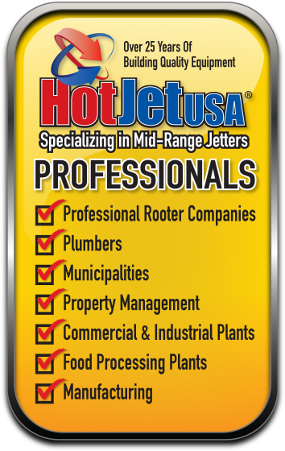Quick Jetter Service Tips: LOW PRESSURE
by Steve Roylance
Steve Roylance has worked at HotJet USA for 25 years and has over 30 years experience in engineering, maintenance and customer service. For any service questions/concerns, give Steve a call toll-free at 1-800-624-8186 or email service@powerlineindustries.com.
Low Pressure Fixes
One common issue with high pressure jetting equipment is either no water flow or low pressure. Did you know 90% of the time this is not due to a failed part? Here are a few things you can check:
Water Valves
Make sure the water supply valves are set to the main water tank and not on the antifreeze tank. tIf the valve is set to the antifreeze tank – if the tank is empty this will cause the pump to suck air and pulsate. Also make sure the shut off valve just before the water filters is also open if there is a secondary shut off.
Water Filters
Check the water filters to make sure they are clean. These filters clean from the inside out, so just looking through the clear bowl doesn’t always work. They can look perfectly clean from the outside, but when you open them up they can be completely blocked with algae or other debris
If you clean the water filter you may need to purge the air out of the pump to get it to prime. Our units have a schrader valve (looks like a chrome cap where you put air in a car tire). What you will need to do is start the machine, pull the trigger on the gun, remove the cap and push the valve like you are letting air out of a tire. This should spit out a little air and water and then eventually just water – then you will notice the pump building pressure.
Pressure Surging
A. It is common for a pump that sucks air to either surge or have free hose shake. The pump will have full pressure when you initially pull the trigger and then drop considerably. These same symptoms can also be caused by plugged filters.
B. A large percentage of the time pressure issues are due to the “low pressure side” or water inlet side of the pump having inlet problems. Seasoned veterans can get tripped up by air getting into the supply side of the pump. Loose filter bowls, missing cup O-rings, even the fittings, hose clamps and pipe nipples between filters can be slightly loose drawing air (and not necessarily leak water).
Next time on quick tips: Diagnosing other issues and parts failures associated with low pressure.








